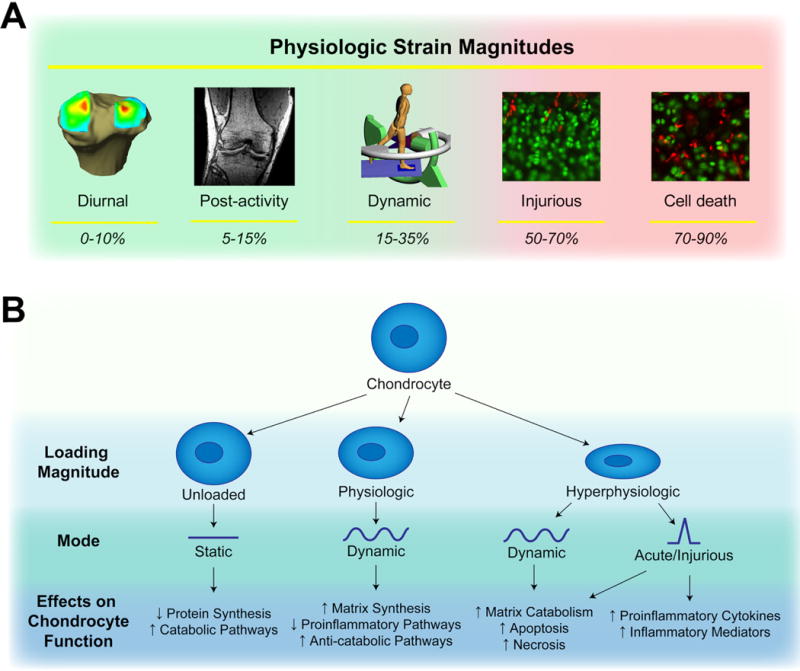Figure 1.

A. Physiologic strain magnitudes measured in articular cartilage. During normal activities, diurnal strains range from 0–10% [9, 10], post activity strains range from 5–15% [12–14, 102], and dynamic strains during activity range from 15–35% [15, 16]. At higher nominal strain magnitudes (50–70%), mechanical compression can cause injury [35–39, 41], eventually inducing cell death via necrosis and apoptosis at strains of the highest levels (70–90%) [40, 47, 48]. B. Effects of different loading conditions on chondrocyte function. Static loading decreases cartilage metabolic activity [46], physiologic levels of dynamic loading can be anabolic or anti-inflammatory [42, 45, 85, 91, 95, 96], while hyperphysiologic levels of dynamic loading and injurious loading can induce catabolic or pro-inflammatory response [41, 49, 50, 91].
